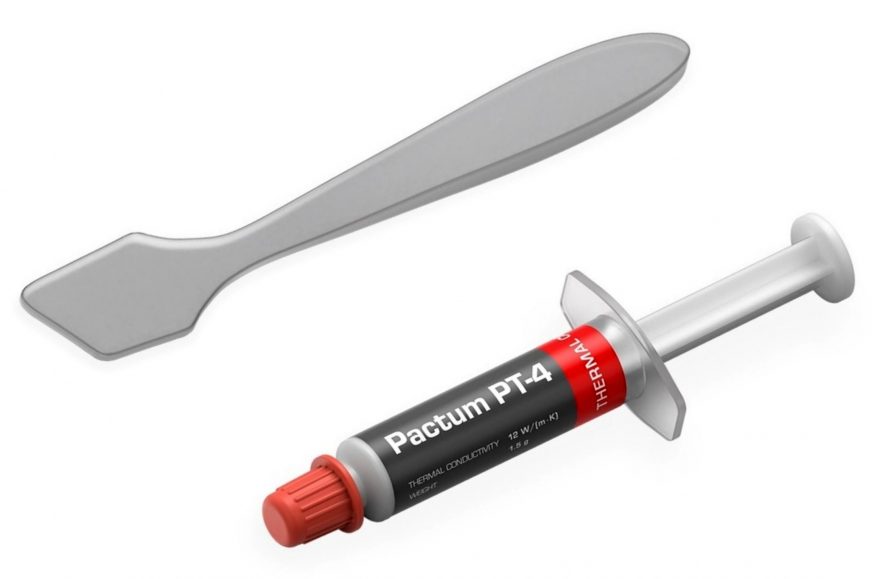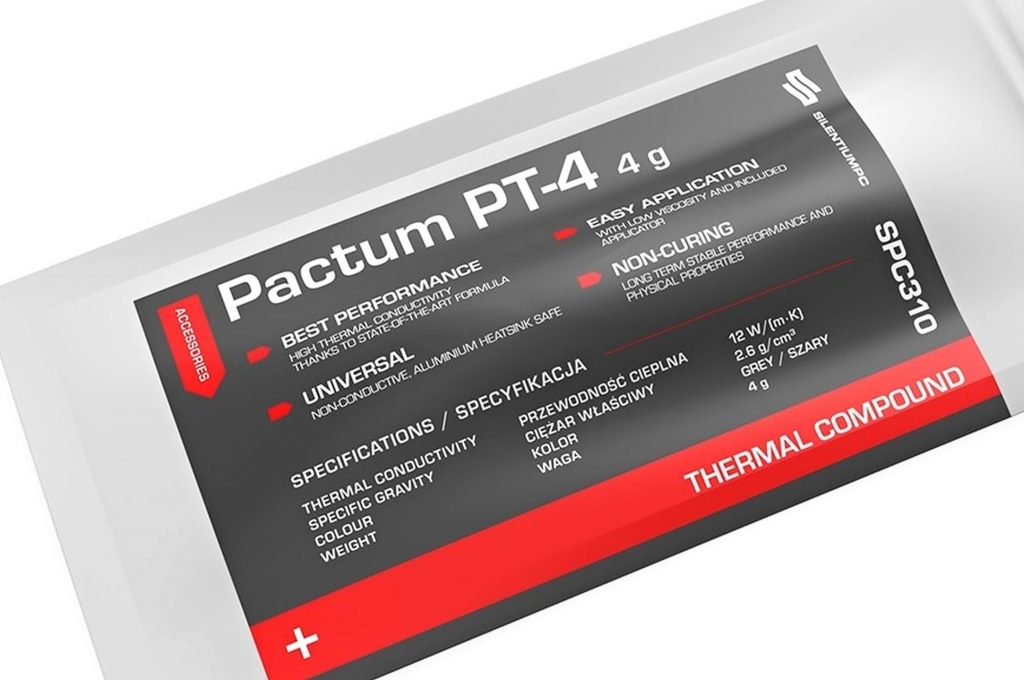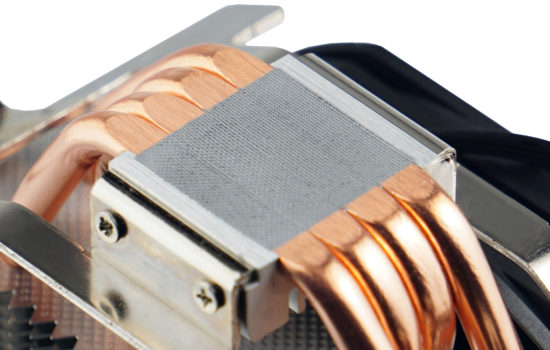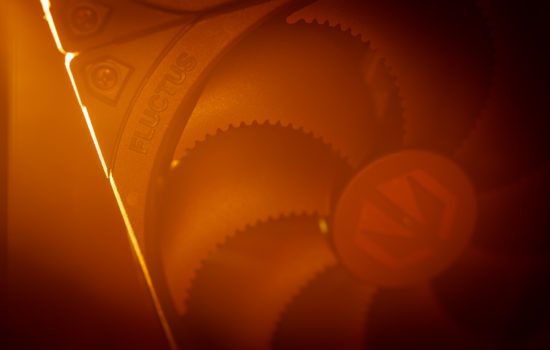Thermal paste Pactum PT-4 released. SilentiumPC claims significantly higher thermal conductivity
A new thermal paste has been introduced – Pactum PT-4. Its specifications are admirable, considering the lower price range. The thermal conductivity is more than double that of the previous Pactum PT-2. At least on paper. It could finally be a real competition for the Arctic MX-5. Particularly the application of the PT-4 should be comfortable for its low viscosity.
SilentiumPC has a relatively strong position in the market among cheaper CPU coolers. Namely the Fera 3 is one of the best-selling coolers in our region, if not the very best-selling.
It is probably a little worse with pastes and Arctic MX resonates in stores a little more. This is despite the fact that SilentiumPC Pactum PT-2 is performs the same as Arctic MX-4 in HWCooling comparative tests. However, a comparison of the latest pastes of the two companies could already turn out differently. SilentiumPC Pactum PT-4 has a stated thermal conductivity of up to 12 W/mK (older PT-2 with only 5 W/mK).
We can only guess what the specifications of the Arctic MX-5 are. Its manufacturer does not mention thermal conductivity and has stopped specifying it in older models. This could mean that the intergenerational improvement is relatively small and Arctic does not want to point to it. Arctic would likely like to point this out if the MX-5 had a significantly higher thermal conductivity than the MX-4 or the even more popular MX-2. Similar to what SilentiumPC has now done.
Of course, one thing is the paper specs and the reality may differ. We will not find out just yet, but maybe later this year we will have a proper methodology for measuring thermal conductivity and other properties of thermal pastes. So keep your fingers crossed for us so that we’ll manage to come with a unique methodology for testing thermal pastes after our new fan testing methodology (first tests soon!). Now let’s get back to the Pactum PT-2.
The composition of Pactum PT-4 is based on zinc and aluminum compounds. However, despite the admixture of metals, it is not electrically conductive. SilentiumPC also speaks of low viscosity, which means that even under lower cooler pressure, a thin film is formed and the paste is generally better distributed on the contact surface.
The recommended application technique is as we would recommend, The recommended application technique is as we would recommend, a small drop or a dash to the center of the chip/IHS. For GPUs or CPU cores, which usually have a rectangular shape, the dash will be more suitable, and a drop for the processor IHS. The specified density of Pactum PT-4 paste is 2.6 g/cm3.
In order to achieve optimal properties, this paste does not require a longer time to “break in” and should give excellent results immediately. SPC Pactum PT-4 comes in two package sizes. A small 1.5 g (it will hopefully be included with processor coolers, the PT-2 is currently still packed with the latest Fera 5) and a larger 4 g pack. This should be enough for 6–13 applications, depending on the size of the area where the paste is applied.
For each case, a small spatula is also supplied with the paste. This is typically for more complicated applications, such as with Threadripper, although when squeezing out the paste in a cross you should do without it.
The paste is slowly beginning to appear in the offer various shops. So we believe that its wide availability and delivery to warehouses will only be a matter of a few days. The final price is very pleasant, 4 euros (1.5 g) and 7 euros (4 g), respectively, while the unit price per gram is more advantageous for the larger package.
- Contents
- Thermal paste Pactum PT-4 released. SilentiumPC claims significantly higher thermal conductivity













